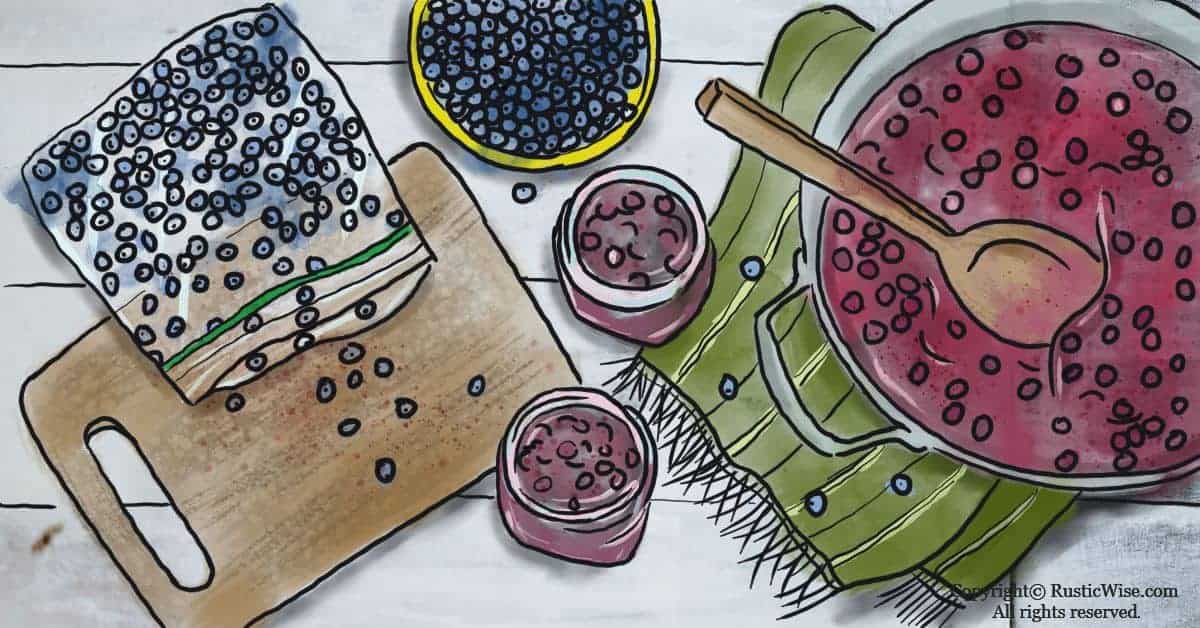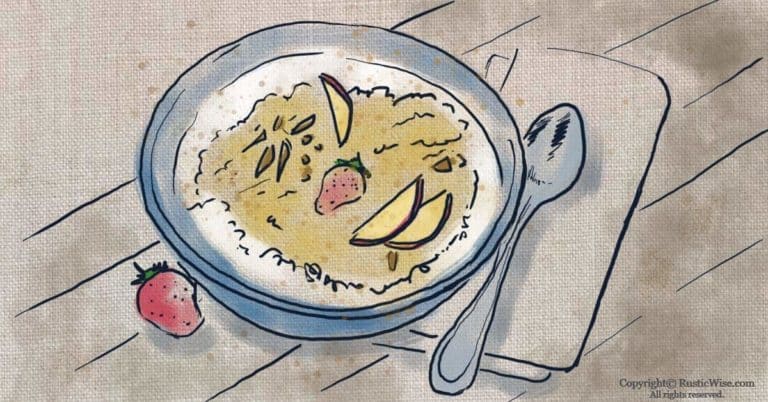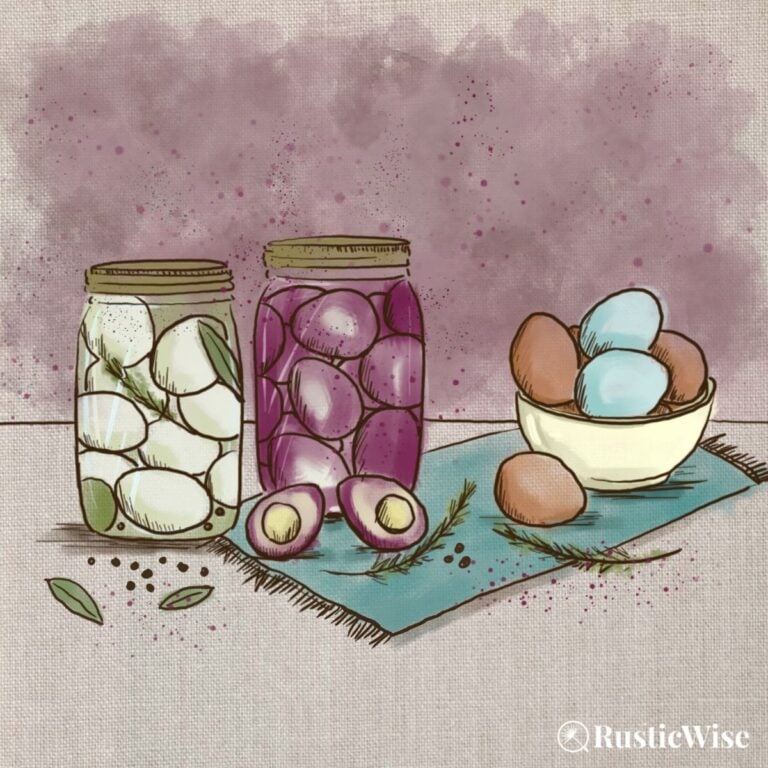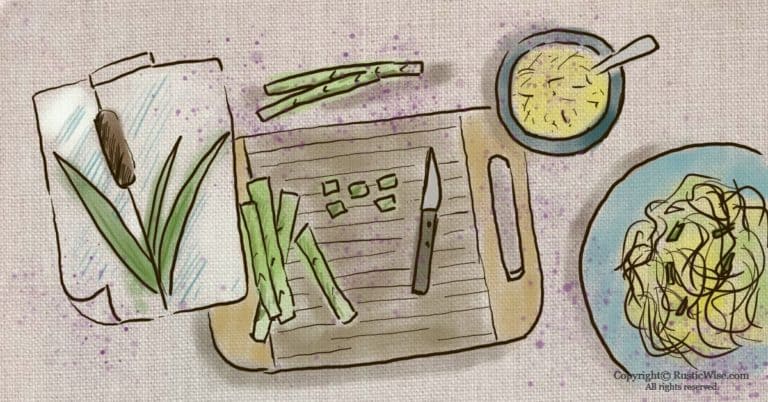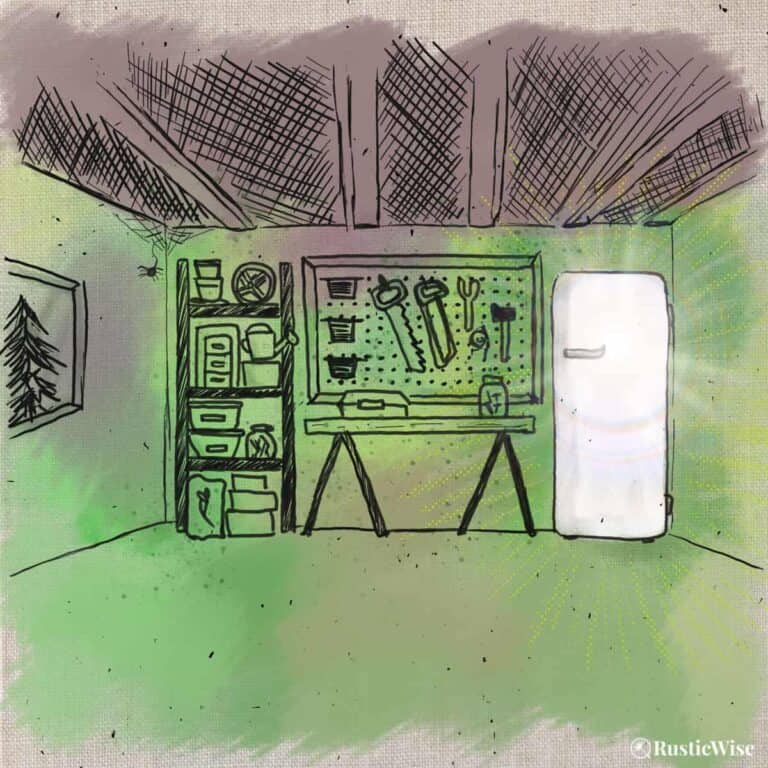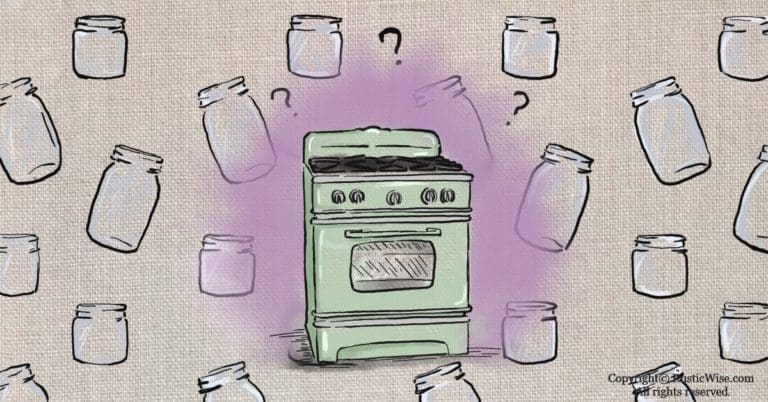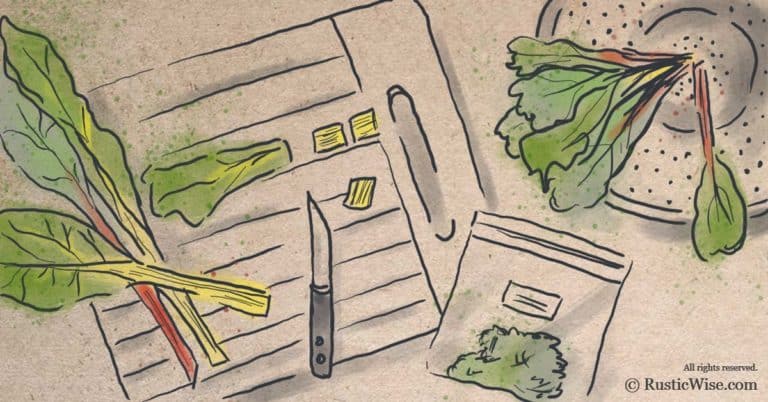Canning Frozen Blueberries: How To Make Blueberry Jam and Pie Filling
If you didn’t find time to can all those delicious blueberries and fruits during the heat of summer, don’t worry, you can freeze them now, then can them later. Canning frozen blueberries and other fruits is a great way to preserve summer’s harvest. Freeze fruits at their peak freshness. This way you’ll be able to can at your leisure during fall and winter, and enjoy the heat of the stove.
Frozen fruit can be used in many different ways from pie fillings to jams and jellies. We’ll go over a few tips on freezing fruits to make it easier to use them when you’re ready. We’ll also go over how to turn frozen fruits into delicious home canned goods safely. Check out recipes for blueberry jam and blueberry pie filling below!
Let’s get started!
Why it’s a good idea to freeze summer fruits
I know it sounds counterintuitive to go through the trouble of first freezing, then canning fresh fruits. The main benefit of preserving fruits is: time.
Time to enjoy the warm weather and feel the sun on your face. Time to can foods leisurely during the cooler months when the warmth of the stove is something to look forward to, not dread.
Summer is a busy time for most people—camping, backyard BBQs, spending time at the lake. Who wants to stand behind a hot stove during the summer heat?!
Fruits frozen at their peak freshness sure beats buying lackluster fresh blueberries that are half wrinkled mid-winter.
The other benefit is to free up some freezer space. In our home, extra freezer space is a precious commodity, one that we’re often lacking. Round up those frozen fruits and put them to good use.
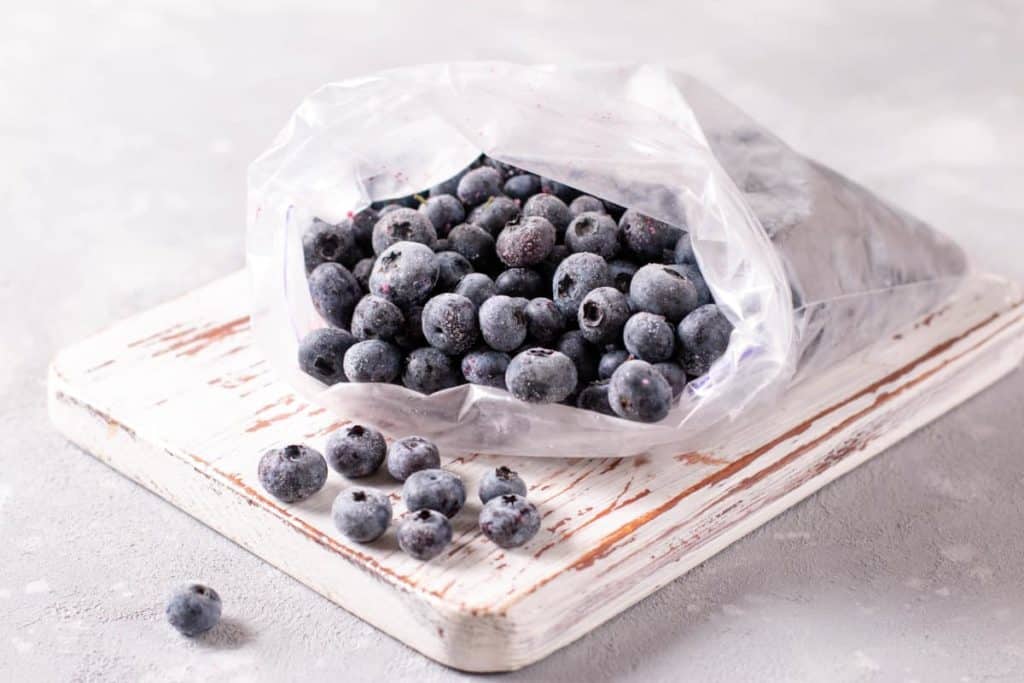
Is it safe to can frozen foods?
Yes, canning foods that were previously frozen is perfectly safe so long as you follow all food safety procedures during freezing and canning.
Frozen fruits can be used the same as fresh fruits in preparing pies, upside down cakes, sherbets, ices and salads. Some fruits, especially boysenberries, make better jellies when frozen than when fresh, because freezing and thawing cause the juices to be released from the cells and the natural fruit color dissolves in the juice.”
the National Center for Home Food Preservation (NCHFP)
What fruits are best to freeze now, then can later?
Fruits beat vegetables in this regard, hands-down.
Many vegetables such as beans or squash can’t withstand the rigors of freezing, then canning without a substantial change in texture. They become mushy versions of their former glorious selves.
But blueberries, and most other berries stand up well to the freezing/canning process. A few good fruits to freeze, then can later, include:
- Blackberries
- Blueberries
- Boysenberries
- Cranberries
- Currants
- Elderberries
- Gooseberries
- Huckleberries
- Loganberries
- Mulberries
Tip: Unfortunately strawberries aren’t a good candidate for canning after freezing as they tend to turn mushy. So enjoy them fresh, or keep ’em frozen.
How to freeze fruits 3 ways
There are different ways to freeze fruits depending on what you plan on using them for.
- Dry packing
- Dry sugar packing
- Syrup packing
Most berries and whole fruits do fine with dry packing, that is, packing without any added sugar. To do this, prep fruits (remove any stems), then flash freeze in a single layer on a baking sheet. Once fruits are hardened, they can be packed into a freezer-safe bag or container.
If you’re planning on making jams or jellies, dry packing works great.
Other methods require the use of sugar or syrup to preserve the fruit’s texture, color, and flavor:
- Dry sugar pack: Wash berries and allow to drain. In a large bowl, sprinkle sugar over fruit until dissolved. The book, The Encyclopedia of Country Living recommends using roughly 1 part sugar to 4–5 parts fruit. Roughly, this is 1/2 cup sugar to 1 pound of fruit.
- Syrup pack: Fruit is submersed in a sugary liquid to preserve it, then frozen. Syrups range from light to heavy depending on the sweetness or sugar content of the fruit. Heavier syrups are traditionally used for more tart fruits.
- For most berries, a medium syrup works well: Combine 5-1/4 cups water to 2-1/4 cups sugar.
Tips on freezing fruits
How long are frozen fruits good for?
Generally, most frozen fruits are best used within one year for optimal quality. While they may technically keep indefinitely in the freezer, there will be a loss of flavor and a change in texture if kept for too long.
Can you use frozen fruits from the grocery store?
Yes, not everybody has access to farm-fresh produce. Using frozen fruits from the grocery store is perfectly fine. It’s best to stick with the organic stuff if you’re making canned foods—the few extra dollars are worth it.
To thaw, or not to thaw…
When it comes to thawing some prefer to take berries straight from the freezer and dump them straight into the pot if you’re making jam. This is fine if this jives with your recipe, and if you’re working with previously washed fruits.
In the case of blueberries which are often frozen unwashed, I like to take a more nuanced approach. Place it in the fridge for a couple of hours before you’re using it. If you haven’t prewashed them prior to freezing, dump them into a colander and give them a rinse.
Allow to drain before quickly adding to saucepan.
New to canning?
If you’re new to home canning, it’s best to read up on a few basic facts first.
Check out our guide, How To Can Food: The Definitive Guide.
As blueberries are a high acid fruit, we can use the water bath canning method using a canner, or a large stockpot.
A few canning supplies you’ll need:
- Water bath canner or large stockpot
- Canning rack
- Clean canning jars, lids, and screw bands
- Jar lifter
- Headspace measurer
- Canning funnel
Check out our in-depth guide to Essential Home Canning Equipment List: What You Need To Get Started.
Other supplies you’ll need:
- Colander
- Saucepan
- Assorted bowls
- Ladle
- Slotted spoon
- Wooden spoons
- Potato masher
- Measuring cups
- Oven mitt
- Clean dish rags (because there’s always something to wipe up!)
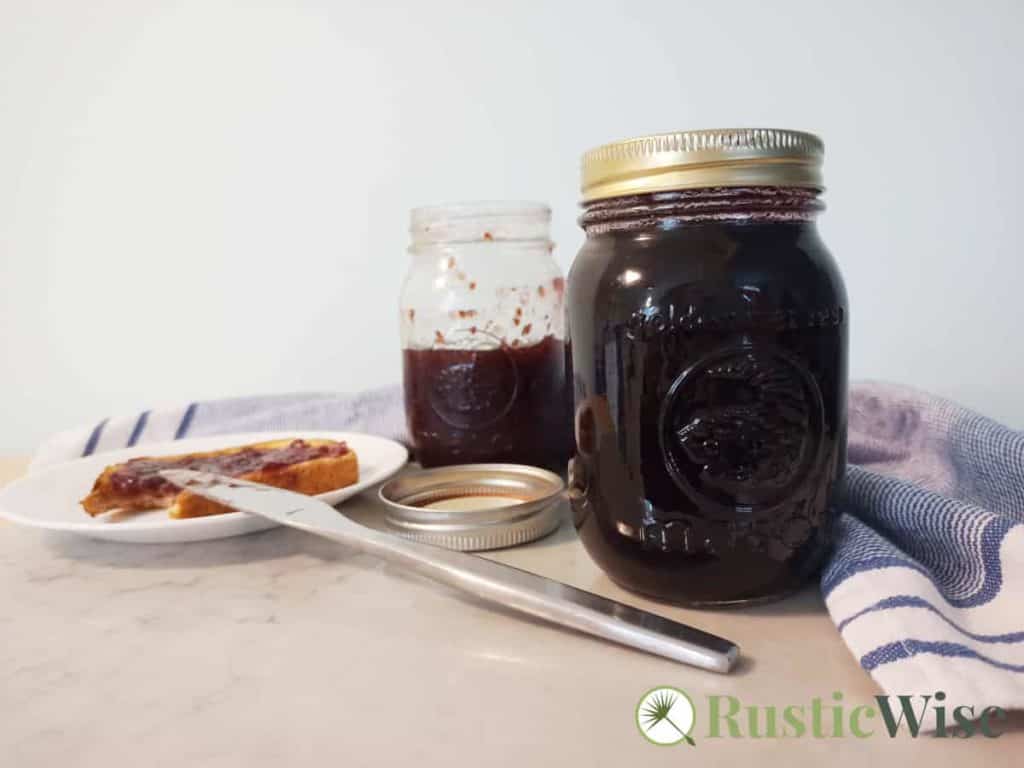
Canning frozen blueberries: how to make blueberry jam
Simple, and straightforward, this blueberry jam recipe is adapted from the book, The New Ball Book of Canning and Preserving.
Yield: 4 half-pint (250 mL) jars
Ingredients:
- 2 2/3 cups (650 mL) of blueberries
- 2 tablespoons lemon juice
- 3 tablespoons (45 mL) Ball Classic Pectin®*
- 3 1/3 cups (835 mL) granulated sugar
*Note: Ball Classic Pectin® works slightly different from other brands of store-bought pectin in that sugar is added after fruit and pectin are combined. Many other types of pectin work by mixing together with sugar. For best results, use Ball Classic Pectin®.
- Remove frozen blueberries from freezer a couple hours prior to canning. Place blueberries in colander and rinse well (if you didn’t wash prior to freezing). Allow to drain.
- In a large bowl, crush blueberries with a potato masher. Add lemon juice and mix well.
- Add fruit mixture and Ball Classic Pectin in a large saucepan. Slowly bring to a consistent rolling boil over high heat, stirring constantly.
- Slowly add sugar to saucepan and stir until fully dissolved. Return mixture to a full rolling boil. Allow to boil vigorously for 1 minute, stirring constantly. Remove from heat and skim foam.
- Ladle the hot jam into a warm jar with 1/4 inch of headspace. Continue until all jars are filled.
- Wipe rims, place lids and screw bands on.
- Process jars for 10 minutes in a water bath canner (make sure to adjust for altitude).
Check out our article on Adjusting for Altitude When Canning & A Handy Canning Altitude Chart.
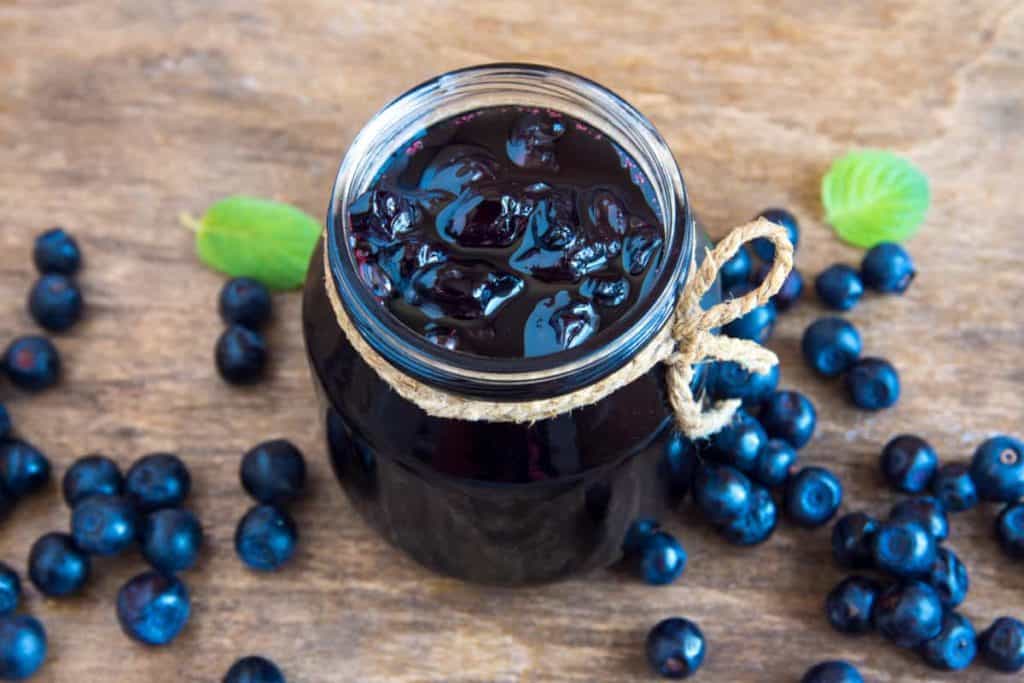
Canning frozen blueberries: how to make blueberry pie filling
Nothing beats homemade blueberry pie!
The following recipe is adapted from the National Center for Home Food Preservation. You can use fresh or frozen berries.
If using frozen berries with sugar, thaw and rinse off any sugar before using.
Yield: 1 quart
Ingredients:
- 3 1/2 cups fresh or thawed blueberries
- 3/4 cup + 2 tbsp granulated sugar
- 1/4 cup + 1 tbsp Clear Jel®*
- 1 cup cold water
- 3 1/2 teaspoons bottled lemon juice
- Optional: 3 drops blue food coloring
- Optional: 1 drop red food coloring
*Note: Clear Jel® is a thickening agent that’s safe for canning and replaces the need for cornstarch (which is not recommended for canning).
- Fill a large pot with 1 gallon of water. Bring to a boil. Add blueberries to boiling water and allow to boil for 1 minute after water returns to a boil.
- Remove from water using a slotted spoon. Keep warm in a covered bowl or pot.
- In a small saucepan, combine sugar and Clear Jel® until well mixed. Add water, and food coloring (optional).
- Continue to cook on medium high until the mixture thickens and starts to bubble.
- Add lemon juice and boil for 1 minute, stirring constantly.
- Add drained berries to mixture.
- Ladle hot blueberry pie filling into warm jar(s) with 1 inch of headspace.
- Wipe rims, place lids and screw bands on.
- Process jars for 30 minutes in a water bath canner (make sure to adjust for altitude).
Related questions
Why is my jam made from frozen fruit not setting?
There may be several reasons why your jam made from frozen fruits is not setting.
Sometimes this has to do with excess water on the fruits after freezing. If your fruits have been washed prior to freezing, then there’s no need to defrost prior to using if you’re making jam—just heat it on the stovetop.
Or, if jam isn’t setting, you may have overcooked it.
In order for jam to set, it needs to reach gel point: 220 degrees Fahrenheit (104 degrees Celsius).
Read more about making jams and how pectin works.
What is freezer jam?
Freezer jam is a type of jam that’s designed for storage in the freezer. It’s essentially like making jam the traditional way (with heat), except it doesn’t require processing as it’s not stored at room temperature.
Most freezer jam recipes contain few ingredients and are quick and easy to make. In a nutshell you prep the fruits, combine ingredients, and freeze.

References
- National Center for Home Food Preservation, Thawing and Preparing Foods for Serving, https://nchfp.uga.edu/how/freeze/thawing.html. Accessed June 2021.
- Emery, Carla (2012). The Encyclopedia of Country Living, 40th Anniversary Edition. Sasquatch Books. ISBN-13: 978-1-57061-840-6.
- National Center for Home Food Preservation, Freezing Blueberries or Huckleberries, https://nchfp.uga.edu/how/freeze/blueberry.html. Accessed June 2021.
- The All New Ball Book of Canning and Preserving: Over 350 of the Best Canned, Jammed, Pickled, and Preserved Recipes (2016). 1st edition. pg. 29. Heathmark, LLC dba Jarden Home Brands. ISBN-10: 0-8487-4678-3.
- National Center for Home Food Preservation, Blueberry Pie Filling, https://nchfp.uga.edu/how/can_02/can_pie/blueberry_filling.html. Accessed June 2021.

Author: Theresa Tesolin
Theresa is co-founder of RusticWise. She helps people unleash their inner DIY spirit by encouraging them to get dirty and make or grow something from scratch.

